Antonello Coletta: The Motor Sport Interview
The man in charge of Ferrari’s Hypercar programme is still recovering from his team’s historic win at Le Mans. Antonella Coletta relives the euphoria of victory but tells us that his fledgling team still has much to learn
Ferrari
Motor Sport: First of all congratulations – but did you really expect to win first time out after such a short lead time for the Ferrari 499P?
Antonello Coletta: No, it was clearly a surprise. The thought of going to Le Mans in your first year and winning straight away would have been a bit too much to imagine. So we went there hoping to fight for the win, but without any certainty of succeeding. We knew the level of our rivals and how difficult it would be to fight with them over 24 hours. We had done a lot of simulations before the race, but as we said afterwards, we had never actually finished one before without any problems. So it was very nice to be able to finally do that in the race itself – and to do it by winning! So on the one hand it was a result that took us a bit by surprise; on the other hand it was confirmation of all the hard work and sacrifices that were made over the few months that we had available to prepare.
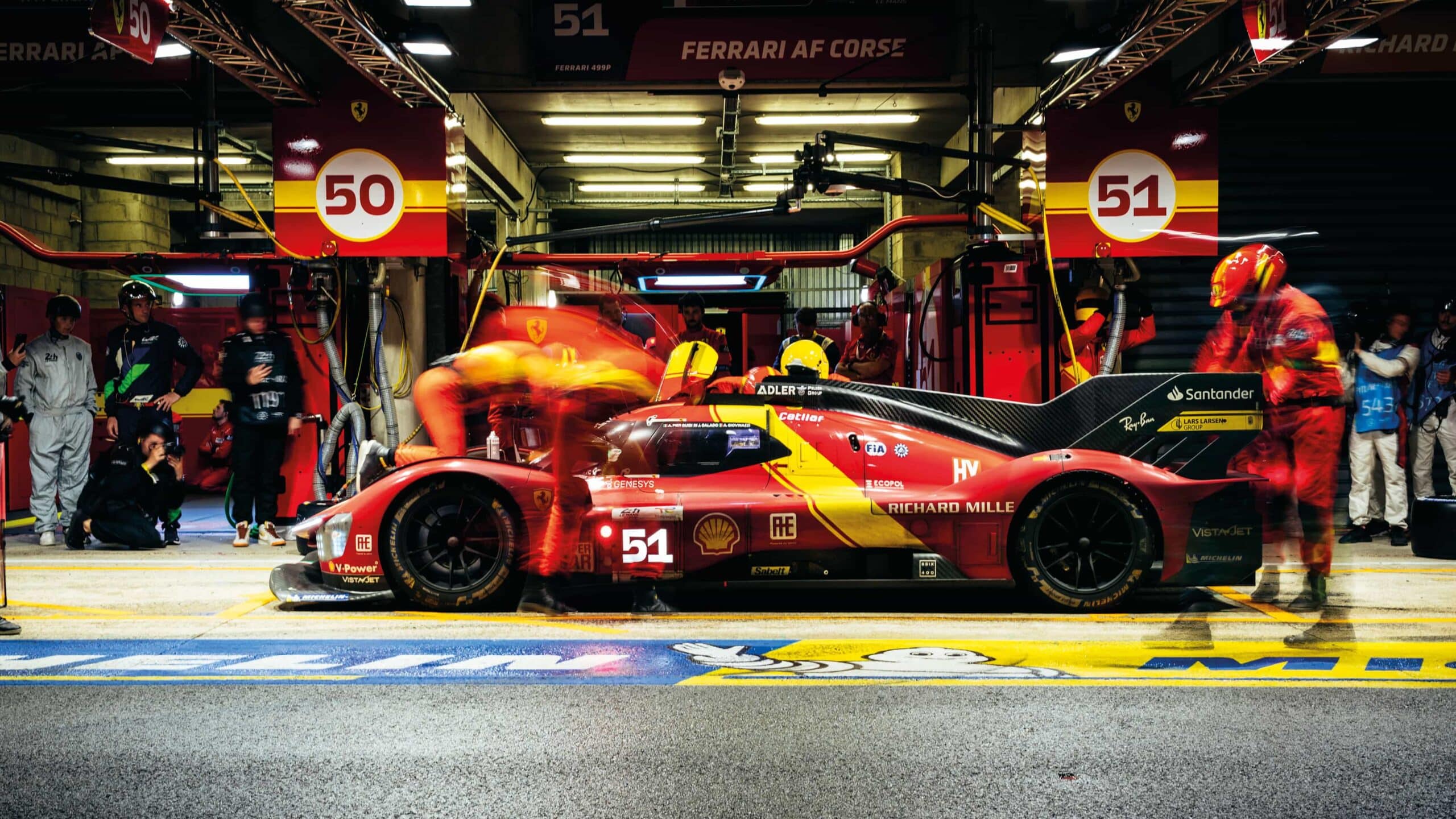
Ferrari’s winning 499P No51
Ferrari
In those few months you also competed in the first three WEC rounds. How did that help you prepare for Le Mans?
AC: The most important lessons we learned were from the mistakes we made. We made a few errors in strategy, a few mistakes in tyre management, but these are all things that were foreseeable precisely because we were starting from scratch. It’s true that we came from a lot of success in the GT category, and I think our ability to manage the races in that category is one of the best – if not the best – of all the competitors out there.
But Hypercar is obviously a completely different thing. We received the tyres from Michelin in mid-January, early February, so compared to our competitors who had driven on them a lot – some had helped to develop them – for us the tyres were a complete unknown. Even now, every time we go out on track we still learn something. So, I would say that the first three races were spent learning the best way to manage the tyres with various set-ups and compounds, and learning a different approach to strategy compared to what we had in GT.
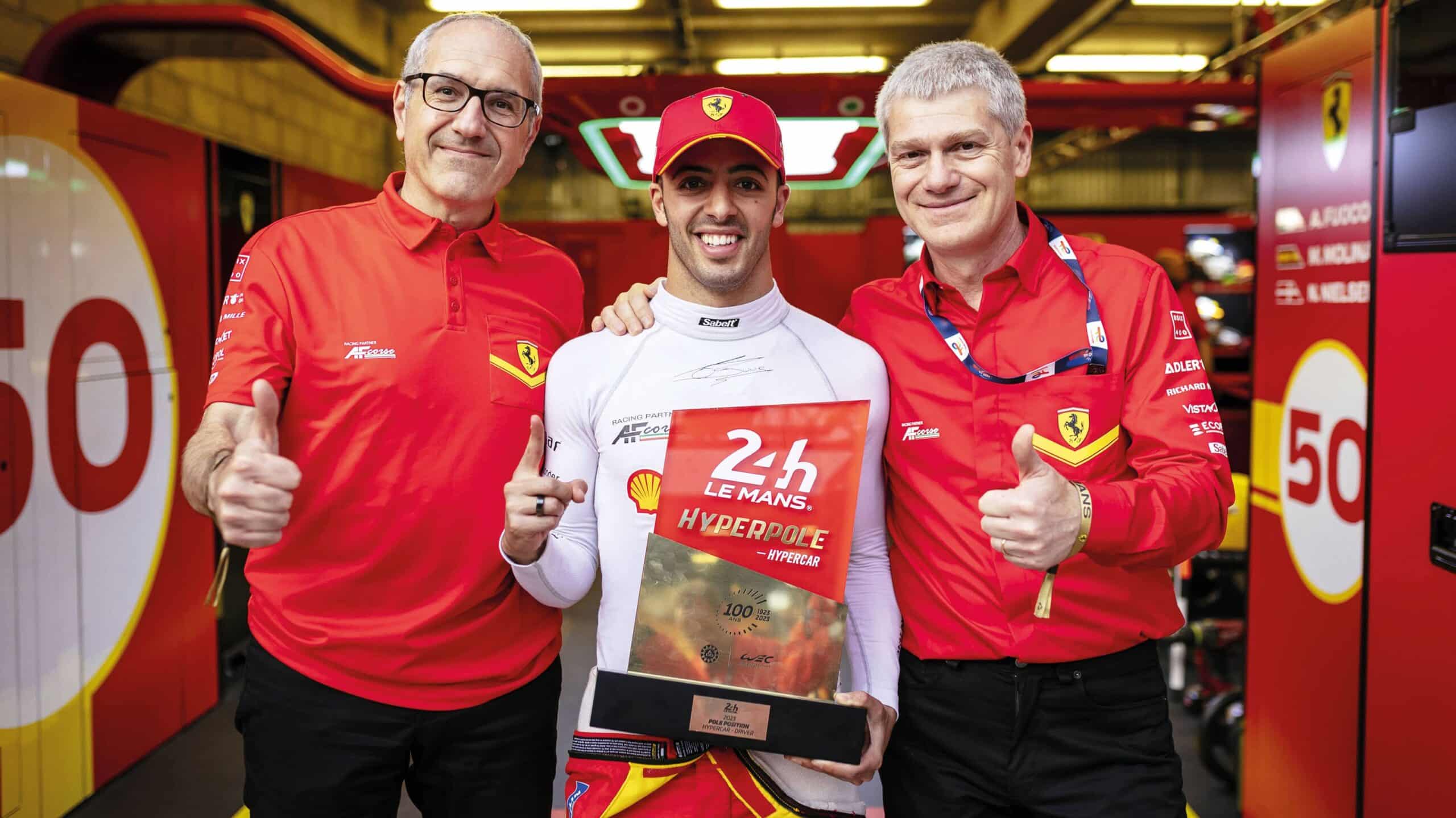
Antonello Coletta, right, with head of endurance race cars Ferdinando Cannizzo and team driver Antonio Fuoco
Ferrari
It’s a different category in Hypercar, with very different cars and different stint lengths, so you have to read the race in a totally different way. Then clearly we had to settle in the whole team and that was very useful experience because we honed all the skills: from the engineers to the mechanics, to everyone else involved in whatever capacity. For me, “team” means everyone: not just the mechanics, engineers and drivers but everyone who is supporting the whole squad, on the logistics and sporting side as well.
So, to answer the question: those three WEC races were really useful for us. The race at Spa, where we had different weather conditions, helped us to understand the car in the wet, in the dry, and in mixed conditions. We experienced this again at Le Mans: at a certain point in the night it was raining on one part of the track but dry in the other, so we got to know our car a little bit in these conditions at Spa and this knowledge certainly came in handy at Le Mans as well.
Your decision to entrust AF Corse with the programme has been well and truly vindicated. What have they brought to the campaign?
AC: AF Corse has been working with us for many years now and this partnership is very important. Clearly, we have all our knowledge, our people and our engineers who designed this car, which was made completely by us. AF Corse brought all the ability to put it on the track, with some very good mechanics and excellent pitstops. There’s a fantastic integration between Ferrari and AF Corse – and that’s what I think makes the team unique. It’s not like Ferrari builds it and AF Corse just looks after the car. It’s Ferrari and AF Corse together. And you can see the proof of that on the track, because without this harmony we would have struggled to achieve these results in just a few months.

The 100th anniversary Le Mans marked the dawning of a new golden era for endurance racing – with Ferrari a central player.
Ferrari
And it’s the same with the drivers isn’t it, who were carried over from the GT programme?
AC: Our driver choice provoked a few comments initially. Not everyone understood why Ferrari wanted to continue with its GT drivers. But we knew exactly what we were doing. We knew the merits of our drivers very well, and when it came to making our choice, my reasoning was very simple. We have drivers who all have some experience in single-seaters and they are all very good in endurance racing too. Most of all, they knew us as a team – Ferrari and AF Corse – very well. So in the few months we had to develop the car, we didn’t want to spend any time integrating the drivers into an already well-established group. So if the drivers are good and fast, and know how to manage endurance races well, and have been working with Ferrari for many years, why look elsewhere?
“We don’t need famous drivers to make the cars win”
I think this serves as an example to others as well, who chose names that were perhaps more famous. At Ferrari we don’t need famous drivers to make the cars win. We have to make good cars and have good drivers. Then the results follow by themselves.

Overnight, some of the Le Mans track was wet, yet other sections were dry; Spa gave similar problems in April
Ferrari
After qualifying on the front row, what was your approach to the race?
AC: After the huge satisfaction of seeing two Ferraris start the centenary Le Mans race on the front row, we concentrated on a strategy that focused on ourselves. We just had to find our pace and see how it went. Others preferred to start on soft tyres and do an aggressive first stint, but 24 hours is a long time, and we were all worried about the reliability of the car. Toyota probably didn’t have that same concern, as they were starting from a position of endurance racing experience.
We concentrated on stretching out the first few hours to find our best race pace to stay competitive and keep in touch. We realised almost immediately that the pace was certainly there. It was a matter of staying towards the front, avoiding problems and putting ourselves in a position to play a part later in the race. Honestly this Le Mans was one of the hardest I’ve ever seen, and I’ve seen a lot of them: 16 or 17, I can’t even remember. There were incidents at all hours, mixed weather, so many different conditions and neutralisations, safety cars, new rules, the lot.

Give the team a hand: this was Ferrari’s first factory-supported Le Mans win since 1965
Ferrari
We had so many different factors in play and I think one of our biggest strengths was that we never made a single mistake in any of the pitstops. This was a very important element and it shows the concentration we had in the race. For someone like me who puts the team together, to see everyone working in this way was something very important.
People will remember the great battle with the Toyota. What was it like from the inside?
AC: I think the important thing is that Ferrari arrived at the second half of the Le Mans 24 Hours with the car that was on the best form: the fastest, and the most consistent contender. Then we had two problems in the pits that cost us a lot of time. We also had a problem for [Alessandro] Pier Guidi who had to avoid an accident between a Glickenhaus and a Porsche GT, if I remember rightly, so got onto the wet and went off. He was fished out of the gravel quite quickly, so we had a bit of luck there too. If you think about how much time we lost with that off-track excursion and the two slow getaways from the pits, I think that’s the best demonstration of just how fast and consistent our Ferrari was.
Toyota started off very fast on soft tyres and wanted to flex their muscles. But as we all know, endurance races are won at the chequered flag, not the green light. It was important for us to get to the second half of the race in a solid position with the car at 100% and save our resources. We did that. The battle we enjoyed with the No8 Toyota, the consistency in recovering from any problems we had, the skill of our drivers when the track was wet and dry, the fact that we gained 45 seconds in three laps… I think these were all elements that destabilised our competitors a little bit. A great show of strength from our team.
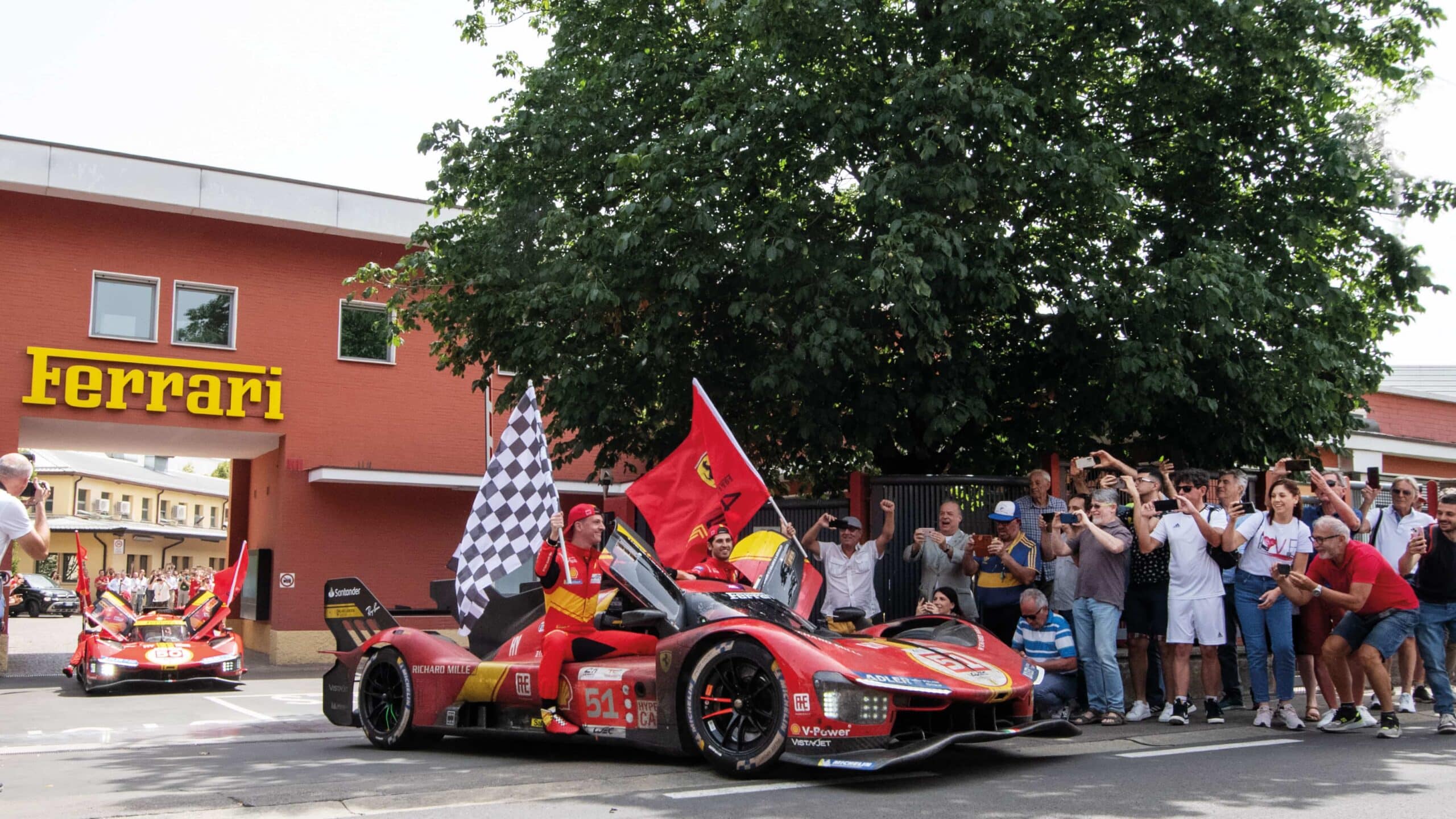
The happy homecoming: it’s a 10th Le Mans win for Ferrari, but perhaps this was the sweetest yet
Ferrari
You mention the problem in the pits. What were you thinking when the winning car struggled to restart at the final stop??
AC: The big scare was actually the first time this happened. About two or three hours before the end, we had a stop of a minute and 10 seconds because the car wouldn’t start in the box. We were really scared, but the cool consistency of our engineers meant that they quickly found a restart procedure to bypass the problem without panicking. After that we were nervous at the next pitstop but we had no problem then, nor at the next one.
“This Le Mans was one of the hardest I’ve ever seen, and I’ve seen a lot“
Then we had the last pitstop and we honestly thought that by then we were over the issue… but instead the car didn’t start! So obviously you feel that the world is falling apart in that moment but it was once again exemplary how calm the driver and his engineer were as they reworked the procedure that they had been through before.
At the time, on the one hand we had the terror but also the knowledge that we’d solved this same problem before. One thing I clearly remember: there was silence from the grandstands when the car was stopped, but then a huge roar when it got going again. That was a wonderful surprise and satisfaction, because we saw then that Le Mans was cheering for Ferrari: that people wanted us to win. I think that in the end this victory was a great breath of fresh air for the whole world of endurance racing. We’ve been privileged to have an extraordinary level of support from race fans.

Battle scars on the winner
Ferrari
Which were the rivals you feared most?
AC: Toyota has always been our reference point, without a shadow of a doubt, as the most reliable competitor and the hardest to beat. But we had a lot of respect for all our opponents, and in particular for Cadillac. This was a very reliable and consistent car so we looked at them too. Then of course there was Porsche, Peugeot… but let’s say that for us Toyota was the absolute benchmark and Cadillac could be the big surprise. In short, we were very careful and respectful of everyone. Rightly so, as the field was extremely well-balanced and competitive; nearly all the cars were in the lead at some point and had their moment in the spotlight. This doesn’t happen by chance: it means that the overall balance was very good and everyone had their chance. Then, in the end, the people who win are those who don’t make mistakes and are still there at the finish.
What does this win mean for you personally and everyone else back home in Maranello?
AC: It’s a dream come true for everyone. From my personal point of view, I’ve always loved endurance racing ever since I was a kid. Maybe it’s odd when everyone else was watching Formula 1, but my passion was always for endurance racing, especially the team concept behind it. If your team doesn’t work at 100% then it’s very difficult to win. So to be able to convince your top management to take on this amazing adventure in the very short time that we had available, to take pole position on our debut, to claim podiums and then win first time out at Le Mans – which never happened to anyone before – is obviously the ultimate satisfaction for us.
We’ve also all been very lucky I think – from every mechanic to me personally – to have families who have supported us and put up with us throughout all the travel, long nights, and sacrifices we each made to reach this level. Now we’ve got this victory, but it’s important to see it as a starting point and not an end point. We’ve done well and achieved quickly but we know that it won’t always be like this: the others will also compete and improve. Already from Monza, the next WEC race, we have to turn the page and start from scratch. Thanks to the points we took at Le Mans, we’re mathematically back in the game to win the world championship. But that’s an almost impossible task as there are only three races left and not many points available. Our spirit is the same though. We are warriors who fight to the last moment to try to bring home the maximum result, and that is what we will do now, with the joy of victory at Le Mans behind us. It’s a wonderful memory but it has to be an incentive to always go at 150% because now we know the pressure will increase.
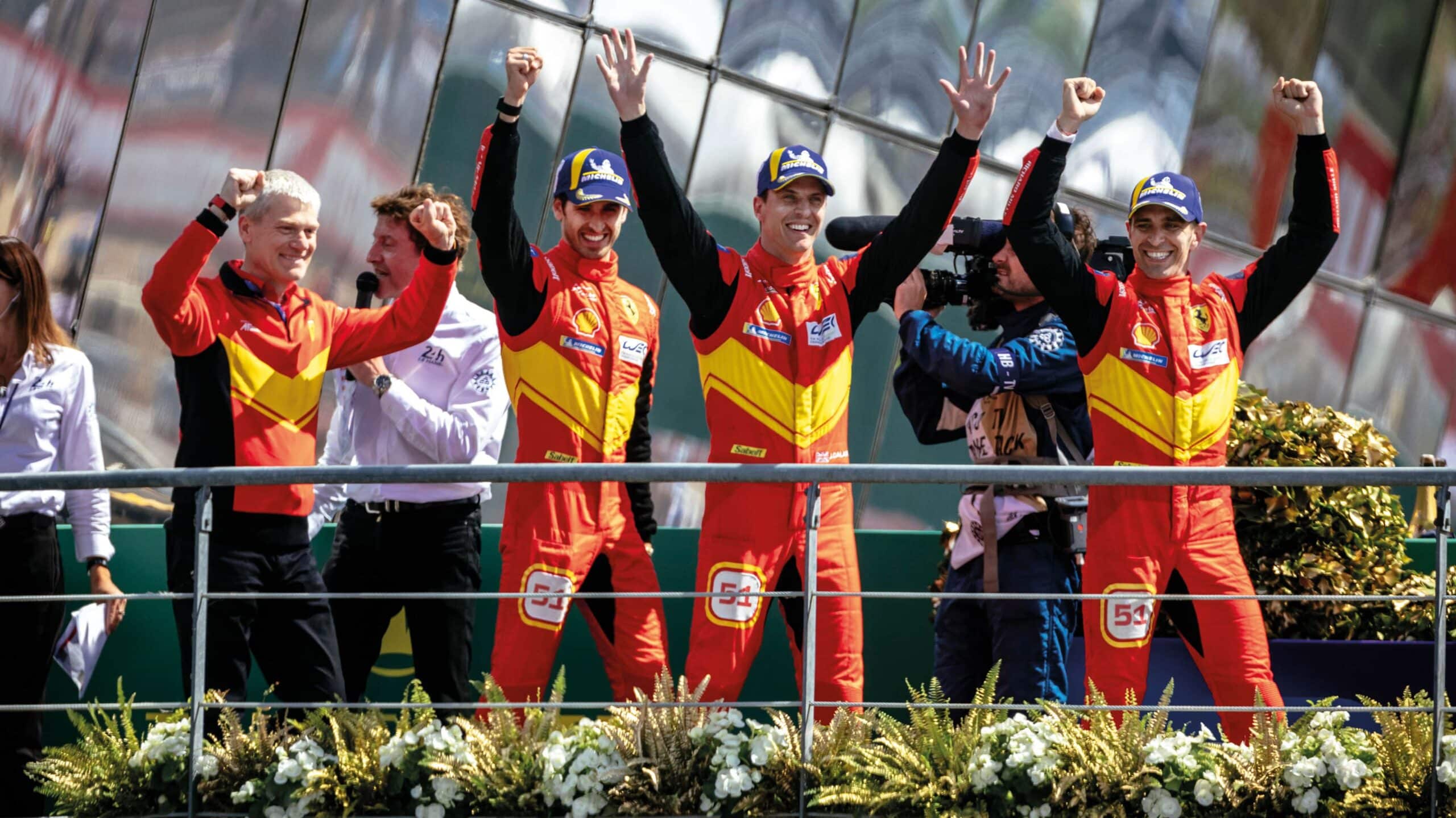
The dream come true
Ferrari
What is next? How do you top this? The programme doesn’t have a set duration, so can you keep on winning?
AC: In life you never stop improving, even more so in competition. The others are great adversaries, great constructors, all of them very competent and very good, so the level is very high, as we have already seen at Le Mans. One thing we know for sure: our apprenticeship phase is not over yet at Le Mans, because we still have a lot to learn: about how to best manage our car, our tyres, our whole team. We still have to grow and we have some margin, so I think we’re going to see some great races with more fantastic battles between everybody in the future.
Could we see some customer cars join the factory squad in the future?
AC: It’s not a possibility that we’ve really considered for the future, but it’s not one that we’ve discarded either. It’s more that we want to make sure we have a solid, reliable and consistent car before we offer it to customers. It’s not easy to manage such a complex machine as so much expertise is required to run it, so it’s hard to imagine having customers. If we were to go down that route it would have to be with very well-prepared and professional teams. I reckon this is something we will probably think about after the Fuji race. Right now we still have to improve our product. It would be hard to imagine a customer programme happening next year, to be honest. Maybe after then, let’s see.
“We had put Ferrari back where Ferrari should be: the very top step“
If you had to choose one single moment or memory from this year’s Le Mans, which would you choose?
AC: To choose one is really difficult; there are two or three that stand out. The first is definitely the start, because to see two Ferraris on the front row of Le Mans after 50 years was something that is incredibly satisfying. Then, I’ll always remember the moment just after the final pitstop, once the car got going again without any problems. Because it was only at that point that we really started to believe it, as then it would have taken something truly out of the ordinary to stop us.
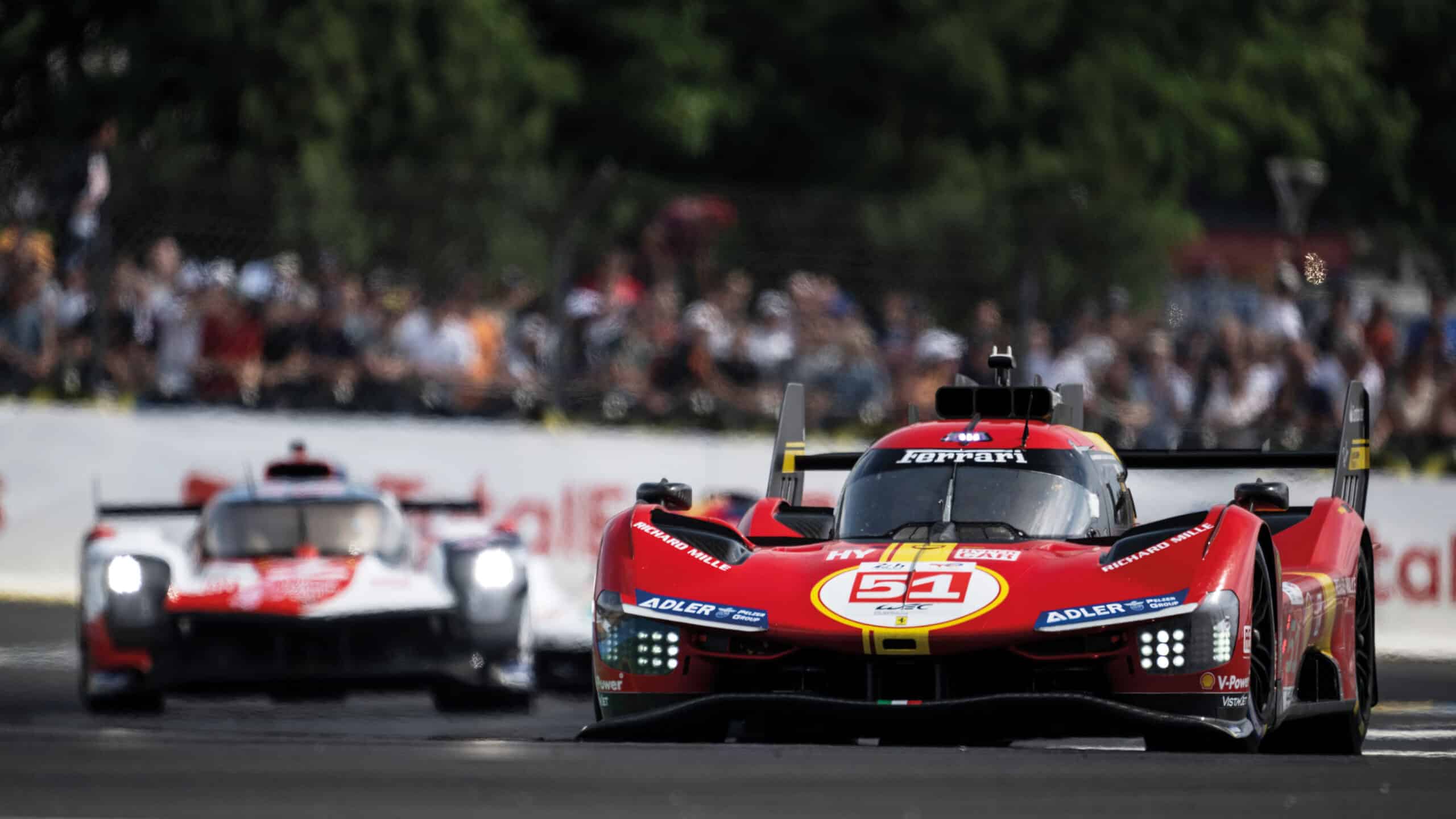
Ferrari is back
Ferrari
Finally, I’ll always remember the podium: watching all those people applauding Ferrari, from the top step of the podium, is a unique and emotional experience that’s actually hard to describe properly in words. We’ve already been on the top step of that podium six times in GT but it’s a very different experience. First you see the overall winners, then only afterwards do you get to go on the podium yourself – and you dream of one day taking their place. That dream came true. We felt not only the culmination of all the hard work we had done, but also the certainty of knowing that we had put Ferrari back where Ferrari should be: on top of the world, on the very top step. We had shown everyone what we know how to do best: create wonderful cars in just a few months.
This is how I would sum it up: Ferrari returned to dominate endurance racing, just as it did in the 1950s and ’60s when the myth of Ferrari became what it is today. The Prancing Horse is back in its rightful place.